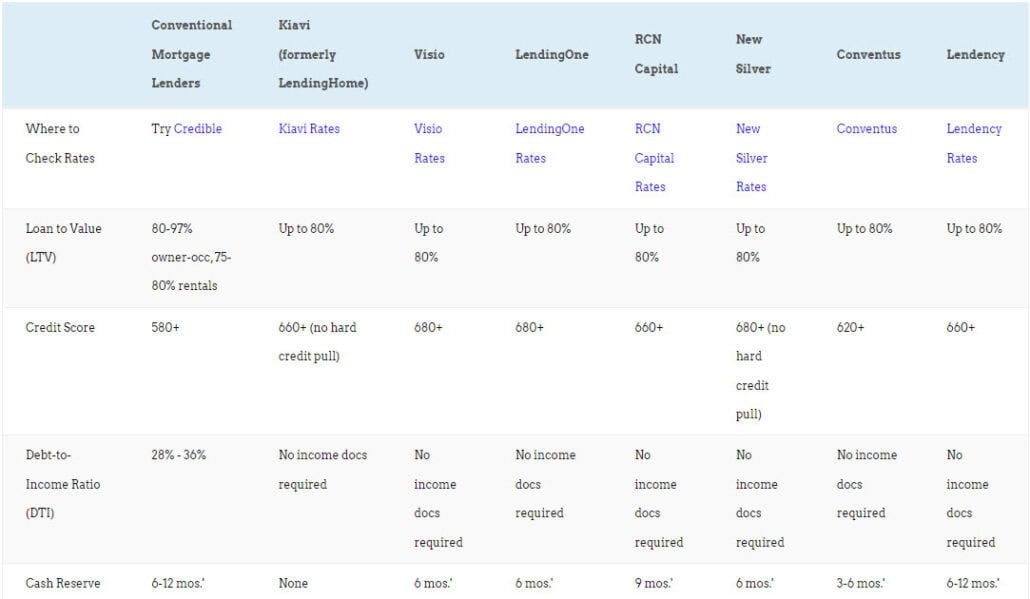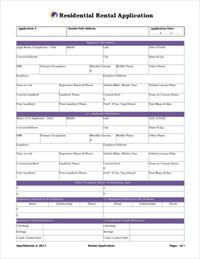The Big Picture On House Hacking:
-
- House hacking offers financial benefits by reducing or eliminating personal living expenses through rental income.
- Implementing house hacking can significantly accelerate the path to financial independence by leveraging real estate investments.
- Creative strategies, such as renting out portions of a primary residence or using multifamily units, enhance the accessibility and profitability of property ownership.

I don’t pay a dime for housing. Before that, I only paid around 30% of my mortgage payment.
How? By finding ways to have other people pay my housing costs.
It’s called house hacking, and there are many ways to achieve it. Not all of them require you to move or buy a multifamily home, either. Try these 14 house hacking strategies to reduce your housing payment to an unpleasant memory.
What Is House Hacking?
In simple house hacking definitions, it involves using your home as a source of revenue, to offset your housing costs.
Now, how does house hacking work? The house-hacking process goes something like this:
| Step | Description |
|---|---|
| 1. Research | Understand local market conditions and housing laws. |
| 2. Financial Planning | Assess financial readiness, including savings and credit. |
| 3. Property Selection | Choose a property that suits your strategy, like a multi-unit building. |
| 4. Financing | Secure a mortgage suited for house-hacking, such as FHA loans. |
| 5. Renovation | Make necessary repairs or renovations to increase rental appeal. |
| 6. Tenant Screening | Implement a thorough screening process to find reliable tenants. |
| 7. Management | Decide whether to self-manage or hire a property manager. |
| 8. Legal Compliance | Ensure all rental activities comply with local regulations. |
| 9. Monitor Finances | Regularly review finances to ensure profitability. |
| 10. Long-term Strategy | Plan for eventual property exit or further investment |
In the classic multifamily house hacking strategy, that meant buying a duplex, triplex, or fourplex and moving into one unit, while renting out the others. The rents from your neighboring units cover your mortgage payment, and ideally some or all of your other housing costs such as repairs and maintenance.
But you can also house hack a single-family home too. It just requires you to get a little creative — or score some house hacking ideas from us.
How to Get Free Housing: 14 House Hacking Strategies
Houses to live in for free? Count me in! But where do you start?
Try the best house-hacking ideas and house-buying hacks as you figure out how to live for free.
1. Multifamily House Hacking: Long-Term Tenants
Multifamily properties aren’t the only option available for house hacking, but they are incredibly effective. Before jumping straight to how to house hack a single-family home, start by considering a small (2-4 unit) multifamily property.
Properties with up to four units are classified as “residential” in the U.S., so you can take out a conventional mortgage loan to buy them. You get a homeowner interest rate, and a homeowner’s low down payment. More on how to finance house hacks later.
To bring it to life, check out this case study of how one young man with no real estate experience house hacked a duplex. Not only do his tenants’ rent cover his entire mortgage, there’s even money left over each month to put towards repairs, vacancy rate, and other rental-related expenses (more on those later too).
2. Multifamily House Hacking: Short-Term Guests
In some markets, strong tourism drives high returns renting out units on Airbnb.
Instead of leasing as a long-term rental, you welcome short-term guests. You don’t have to worry about personality conflicts, rent defaults, evictions, pets, poor maintenance and lawn care, or any of the other headaches that sometimes accompany long-term tenants.
Not that short-term rentals come without any risks. They can still cause damage, and vacancy rates can fluctuate by seasonal tourism. Then there’s the extra work, especially in laundry, cleaning, and answering questions from guests who have apparently never seen a washing machine before.
You also need to pay for the utilities and furnish the property. Of course, no one says you have to buy brand new furniture or decorations — just make sure your décor and furnishings are clean, coherent, and don’t show wear.
If you’re new to vacation rentals, start with these 12 secrets to success for new Airbnb landlords. Then check out our free webinar with Airbnb expert Al Williamson, on how to double your revenue with Airbnb.
Lastly, check your local vacation rental laws to make sure they don’t restrict homeowners. Some cities effectively ban Airbnb, so landlord beware.
3. Live-In Flips
Not everyone wants to live in a multifamily property. And for those who love home improvement projects, a live-in flip can be just the ticket.
The concept isn’t new: you buy a fixer-upper, renovate it over the course of a year or two, then sell it for a tidy profit. A profit that ideally reimburses your housing costs for the time you lived in the house. You effectively score free housing for that period.
Then you can rinse and repeat, doing it all over again with a new fixer-upper.
On the plus side, you can finance the repairs as part of your mortgage. Try a 203K loan or a Fannie Mae Homestyle renovation loan through Credible to roll in the renovation costs.
As another bonus, if you live in the home for at least one year you pay the lower capital gains tax rate on your profits. Live in the house for at least two years, and you avoid real estate capital gains tax altogether by taking advantage of the primary residence exclusion (Section 121 exclusion).
Live-in flips come with their share of headaches though. To begin with, you have to live in a construction zone until you complete the renovations. Then there are the actual repairs themselves, which take time and labor on your part. Even if you hire it out to a contractor, you then have to manage them and oversee the work, not to mention pay for their labor.
And, of course, you have to move frequently. Spouses and kids might not look upon that as favorably as you do, although live-in flips do offer endless opportunities to teach kids home improvement skills.
4. Housemates
In the first home I owned, my housemate paid nearly three-quarters of my mortgage payment.
While we didn’t know each other initially, we became close friends over time. Eventually, we grew so close that we traveled internationally together. She and her boyfriend (now husband) met Katie and me in Italy for a week of romping around Genoa and Piedmont wine country.
Some called me “lucky” to have found such a great housemate. But the truth is I vetted Erika carefully, running tenant screening reports on her, asking dozens of questions about her personal habits and lifestyle. And she grilled me in return, to make sure we were a good fit to live together.
We asked each other questions like:
-
- When do you normally go to bed and wake up?
- How often do you think the house should be cleaned?
- Which chores do you hate? Which chores do you not mind?
- How often do you like to cook?
- Do you have a significant other? How often do they sleep over?
- Do you like having friends back to the house? Throwing parties? How often?
And so on.
One final perk when you rent out extra bedrooms: your housemates split your utility bills with you too. That alone can theoretically save you thousands of dollars each year.
You can “rent hack” with roommates as well, if you’re the only one on the lease agreement. I’ve known many people who negotiated a low rent for a house, then subleased rooms to housemates.
Housemates are a great way to cover your housing payment, just be prepared to compromise. It’s not a free lunch — you give up some privacy and personal space. In return, you can supercharge your savings rate and put more money towards investments and financial independence and early retirement.
If you really want to cash in on housemates, try PadSplit. They come in and convert underused rooms in your home into bedrooms, and handle the tenant screening and leasing for you. But expect a more crowded house, in exchange for the higher rent checks.
5. Rent Rooms on Airbnb
Hate the idea of sharing your home with a housemate?
You can alternatively rent out rooms in it short-term to guests. It lends itself well to rent hacking too, if you rent your home rather than owning it. My friend Renee rented a bedroom/bathroom suite in her apartment on Airbnb, and found that if she rented it out for two long weekends each month, it covered the bulk of her rent payment.
This house hacking strategy comes with its own set of tradeoffs. These include less consistent revenue, more cleaning, and you pay the utility bills in full.
Still, it can be a great way to rake in some rent without the compromises inherent in living with a roommate. You get to furnish and decorate your home however you like, and much of the time you get the unit to yourself. Check out these Airbnb marketing tips to drive more bookings and keep your vacancy rate low.
6. Rent Your Entire Home on Airbnb
You’re not limited to just renting rooms in your home on Airbnb. Why not rent out your entire home when you’re not using it?
For example, you could rent out your home when you’re traveling, or spending the weekend at your parents’ house, or at your boyfriend’s place.
My cousin listed her entire home as permanently available on Airbnb. Whenever someone booked it, she simply crashed with her boyfriend. It took less than ten booked nights each month to cover her entire rent payment.
7. Add a Basement or Garage Apartment
You know what most people use their basements and garages for? Storing Christmas decorations and boxes of old junk — which is about as useful as a screen door on a submarine.
Instead, convert your basement or garage to an income suite. To be practical, the rental unit should have its own separate entrance, and you’ll need to add a kitchen (or kitchenette) and full bathroom if it doesn’t have them. If it cost you $6,000 to set up a basement apartment, and you rent it for $600 per month, it would pay for itself in just ten months.
The basement should ideally have climate control, but if not don’t sweat it. Most basements are inherently cooler than the rest of the house, and for the winter, you can always provide a space heater if need be.
Keep in mind that your garage may not be insulated, and should ideally have some form of climate control. Space heaters or pellet stoves are an option for heat. But unlike basements, which remain cool both from being underground and being the lowest point in the house, garages may also need cooling. Window units are an option however, to avoid adding ductwork.
In most cases, you can set up the apartment informally, without rezoning the property for a second unit or possibly even pulling work permits. But do your own homework on that front, and don’t blame me if your municipality gives you grief.
Price out how much it costs to create a basement ADU or garage apartment, just for gits and shiggles. Just make sure the local market rents and demand justify the expense, before you go through the hassle of creating a separate basement apartment.
8. Add a Standalone ADU
If your house doesn’t have a basement or garage that lends itself to converting into an apartment, you could alternatively build a standalone ADU.
Accessory dwelling units go by many names: casita, guest house, carriage house, in-law suite. You can even buy a tiny home cabin kit on Amazon for under $10,000, and build it yourself in eight hours!
Sort of. Those basic kits don’t come with electricity, running water, kitchens, bathrooms, or climate control. That doesn’t exactly fit the definition of “habitable.”
Still, you see the possibilities: if you could build a freestanding ADU for $20,000 and rent it for $1,000 a month, the project could pay for itself in under two years. That’s not even considering the additional resale value.
You can also rent out guest houses on Airbnb listed as “entire home,” if you don’t want to rent long-term to tenants. I’ve stayed in guest houses on Airbnb before, and for that matter in above-garage apartments. All positive experiences.
And, of course, if your aging parents ever need to come live with you, at least you can put them under a separate roof.
9. Move into the ADU, Rent Out the Main House
Not all of us feel compelled to live in McMansions. Some of us are perfectly content to live in a small house or apartment, or even a tiny home.
If you don’t mind less square footage, consider moving into the accessory dwelling unit and renting out the primary residence. That could be to long-term renters or to short-term guests on Airbnb. Or, for that matter, to extended stay guests such as travel nurses.
You can earn far more rental income, potentially covering more of your monthly expenses than just your housing payment.
10. Rent Out Storage Space
Boxes and storage bins don’t play music late at night or leave dirty dishes in the sink.
Our co-founder Deni rented out most of her detached garage at her former home. Someone paid her $300 a month to store their stuff there, and Deni never saw them. They had a key to the garage (but not her home), and came and went as they pleased – which was almost never.
Before you get too excited, bear in mind that this tactic is the least lucrative on this list, and will almost certainly not cover the majority of your housing payment.
Another advantage to renting out storage space: if renters don’t pay the rent, you can “evict” their stuff quickly and inexpensively. It’s nothing like the long, drawn out eviction process for residential renters.
Check out Neighbor.com and SpareFoot.com as two options for renting out your spare storage space, and enjoy some stress-free income!
11. Rent Parking
In some neighborhoods, parking comes at a premium. If you have a space you don’t need, convert it to passive income!
Think bigger than just cars, too. Could you rent parking spaces for RVs? Boats? Other oversize vehicles?
The revenue probably won’t cover your monthly mortgage payment, but it can at least put a dent in it.
12. Rent an RV Hookup
For that matter, you could let RVers park on your property as an overnight destination. If your property fits that bill, consider installing an electric, water, and sewer hookup.
You don’t have to share a roof with your guests, and you still collect some extra income. Again, it probably won’t cover your entire housing expenses, but it helps.
13. Foreign Exchange Students
When Deni first started this business with me, she was a bit cash-strapped after our startup costs. Her children had all moved out of her suburban home, leaving her with a large home with an equally large mortgage payment.
But she and her husband Jerry weren’t ready to downsize just yet, and they love kids, so they got creative. After a little research, they discovered an exchange student placement program that pays a generous monthly stipend to hosts.
They soon welcomed Alex, a teenager from China on an exchange. While they only planned to host Alex for a single school year, they fell in love with him and offered to let him return the following year.
He’s now going into his third school year living with Deni and Jerry. And all the while, the placement service pays over half of Deni and Jerry’s mortgage!
Nor is this option limited to homeowners. It’s a great option for rent hacking as well.
Deni went through the Cambridge HomeStay program if you’re interested in checking them out.
14. Get a Job That Offers Free Housing
Last but not least, you could always get a job that provides housing. Katie and I do this currently: the school where she works pays for our furnished apartment.
It’s standard practice in international education, where teachers and administrators live for free. But plenty of other jobs provide free housing as well, including:
-
- Groundskeeper/caretaker
- Live-in caregiver
- Au pair
- Travel nurse
- Park ranger
- After-hours security
- Property manager/superintendent
- Diplomat/Foreign Service officer
…and many others. While it’s a type of house hacking largely outside the scope of this article, it’s worth mentioning nonetheless.
Want to compare investment property loans?

What do lenders charge for a rental property mortgage? What credit scores and down payments do they require?
How about fix-and-flip loans?
We compare the best purchase-rehab lenders and long-term landlord loans on LTV, interest rates, closing costs, income requirements and more.
Financing Options for House Hackers
As touched on above, you can use conventional loans to house hack. You don’t have to use real estate investor loans, which come with higher interest rates, closing costs, and down payments.
While we cover this topic at length elsewhere, here are a few ideas to get you started on your house hacking mortgage search.
Conforming Loans
When you think of a conventional mortgage, you’re most likely thinking of conforming loans, which meet Fannie Mae and Freddie Mac guidelines.
These tend to be low-cost loans for high-quality borrowers. If you don’t have great credit, read up on how to build credit fast to qualify for a cheap conforming loan.
You can compare instant prequalified interest rates and fees for different conforming loans on Credible. And while you’re at it, read up on these new Fannie Mae and Freddie Mac loans with as little as 3% down.
FHA Loans
FHA loans are specifically designed to help borrowers with lower credit buy a home.
The good news: they only require a 3.5% down payment, for borrowers with credit scores as low as 580. Interest rates also tend to be low, considering the flexibility of the loan requirements.
The bad news is they cost more than conforming loans, and borrowers can no longer remove the mortgage insurance premium (MIP) after the loan drops to 80% of the property value. It’s due for the entire life of the loan. In the duplex house hacking case study above, Tim used an FHA loan.
FHA 203K Loans
Considering a property that needs work? Hard money loans aren’t your only option.
You can borrow an FHA 203K loan, that allows up to $35,000 for property repairs. It’s a great way to finance a fixer-upper.
Fannie Mae Homestyle Renovation Loans
As the conforming alternative to FHA 203K loans, borrowers with strong credit can buy with a Fannie Mae Homestyle Renovation loan.
They come with their own restrictions, so talk to a lender before making any offers. You can compare Homestyle rehab and FHA 203K loan terms on Credible as well for quick quotes.
VA Loans
If you’ve served in the armed forces, you likely qualify for a Veterans Affairs (VA) loan.
These loans are extremely low-cost, and in some cases require no down payment at all. Once again, talk to a lender to explore your eligibility and loan terms.
Read up on how to buy investment properties with VA loans. Hint: it starts with house hacking, then you simply move out and keep the property as a rental. It’s not a bad real estate investing strategy, building a portfolio of rentals as a serial house hacker.
USDA Loans
In rural real estate markets, you may qualify for a USDA loan — which also allows a 0% down payment.
Savvy investors use the best financing at their disposal. Just don’t get so caught up in the low down payment requirement that you overleverage yourself and end up with monthly payments that you can’t minimize by house hacking.
Analyze House Hacks Like Investment Properties
Stop thinking like a homeowner already! Shift your mindset to think like an investor.
It starts with running the numbers on your prospective real estate investment. You can use a rental income calculator to forecast your rental cash flow on the property, even though you’ll be living there yourself. But we actually built a separate house hacking calculator to estimate your housing costs for any property.
Make sure you understand the fundamentals of forecasting cash flow. You need to know how to estimate expenses like vacancy rate, future property taxes, maintenance, repairs, property management costs, and so on.
Video: How to House Hack
Prefer watching videos to reading? Our friend Rick Orford, AKA The Financially Independent Millennial, produced this video about how to house hack:
Benefits of House Hacking (Beyond Living for Free)
Now that I’ve just finished talking up how awesome it is to live for free, it’s time to put that little chestnut aside for a second, because house hacking is about more than just rent-free living.
First, house hacking lets you get started in real estate investing with very little money down. Because you’re buying a home to live in yourself, you qualify for owner-occupied financing. And owner-occupied financing means low interest rates and low down payments, often in the 3-5% range. Which is as close as you can get to investing in real estate with no money down.
With lower interest rates, your mortgage payments will be lower than your typical investment property loans. Which in turn means better cash flow for you as a landlord.
Circling back to the whole “live for free” thing, housing is most people’s largest expense. People routinely spend 25-50% of their income on housing alone. By eliminating it, you instantly boost your savings rate by 25-50%—making it that much easier to buy your next property. And the next one, and the next one after that, to snowball your income with each new property. You can quickly build a real estate portfolio and monthly cash flow.
Finally, some house hacking tactics can split or cover your utility bills, too, shaving more money off your living expenses and helping you reach financial freedom faster.
Potential Downsides to House Hacking
While house hacking is indisputably awesome, it’s not without its cons.
Before you buy a property to house-hack, make sure you understand and accept the following downsides.
Being Both Landlord and Neighbor/Housemate
It’s not always easy to wear multiple hats.
When you rent to a housemate or a neighbor, you have two separate but entangled relationships. If they don’t pay the rent, or cause damage, or otherwise violate the lease agreement, you need to charge late fees and file to start the eviction process.
But in your day-to-day interactions, your relationship is that of neighbors or housemates. Who cleans what, noise issues, who gets access to the bathroom when; these are all completely separate from your landlord-tenant relationship.
Be sure to collect detailed rental applications from all prospects, and run tenant screening reports including credit reports, criminal reports, and eviction reports. Beyond background checks, verify their income and employment, talk to current and former landlords, and otherwise thoroughly screen tenants — including housemates.
You can also insure against them defaulting on the rent and needing to be evicted. Insurance companies like TheGuarantors or Steady will pay you the rent if your tenants default!
Finally, have an additional set of questions ready to evaluate them as a housemate or neighbor. Just because they pay rent on time doesn’t mean they won’t drive you crazy with their dirty dishes or late-night movie marathons.
Speed Limit: One Property Per Year
When you take out an owner-occupied mortgage, you agree to live there for at least a year before moving out.
That means you can only buy one property per year by house hacking.
Legal Considerations
Is house hacking legal? House hacking that involves renters is not so dissimilar to being a landlord that you can forget about learning the laws about it. You need to consider the applicable landlord-tenant laws and regulations in your state and cover yourself from potential issues from the Fair Housing Act.
To avoid this potential headache and speedbump to no-cost housing, consider the following:
-
- Familiarize yourself with fair housing laws.
- Use objective criteria for tenant selection.
- Ensure advertising is neutral and non-discriminatory.
- Provide equal treatment to all inquiries.
- Standardize application and screening processes.
- Avoid making assumptions based on tenant backgrounds.
- Keep records of all interactions and decisions.
- Educate yourself and your staff on anti-discrimination practices.
- Handle accommodation requests appropriately.
- Stay updated on changes in housing regulations.
Credit Reporting Limits
Owner-occupied mortgages report to the credit bureaus for your personal credit report.
If that doesn’t sound like a problem to you, consider that most mortgage lenders put a limit on the number of mortgages you can have. And not a high one, either: the standard cap is four mortgages max.
Which makes house hacking a great way to get started in real estate investing, but not a scalable way to invest in real estate in the long term.
The Inconvenience of Moving
One final drawback: house hacking requires you to live in the property, which means that every time you buy a new property to house hack, you have to move.
And let me tell you: moving every year gets old. Fast.
It can also affect your children’s school districting, your marriage, and your sanity.
All of which brings us back to the same point, that house hacking is great for getting started in real estate, but only for your first few properties.
Tying It Together
I love creative house hacking strategies and other real estate hacks to live for free and buy a rental property with no money down (or close to it).
But house hacking isn’t scalable, and it can only take you so far. Use it to maximize your savings rate, and to start setting aside more cash for future rental properties.
Then use investment property loans to build your portfolio from there.
And no one says you have to live in a multi-unit property if you don’t want to. Get creative with it, and house hack a single-family home if you like!
Happy house hacking, and here’s to living rent-free forever.♦
What have your experiences been with house hacking? What would you tell other people wondering how to get free housing?























I will be house hacking with a multi-family. It will be a great way to earn some extra money and live free. I am thinking however, doing this will cause me to feel like I need a disguise to walk out of my house, having renters living right next door. Main goal is to make sure I really enjoy my neighbors! I had a friend who lived in the city and bought a house with 4 bedrooms. She rented out all of the rooms and charged them twice the amount she needed to pay mortgage. This is such a great way to start out. Great read Brian!!
Thanks Harrison! And if you’re that worried about wearing both hats as neighbor and landlord, you can always hire a property manager. Or you can just call yourself the manager, rather than the landlord!
Definitely possible to maintain good relations with your neighbors. Just do really thorough tenant screening so you get respectful, reliable long-term renters in there!
Many first-time home buyers and real estate investors can get valuable landlording experience with a relatively low amount of risk. This includes advertising vacancy, tenant screening, tenant management, understanding rental agreements and contracts, dealing with unanticipated housing issues and repairs, negotiating with contractors, and bookkeeping. It’s a great way to start investing.
Absolutely Brian! House hacking is a great way to get started with real estate investing. Almost like “training wheels for landlords!”
That’s my favorite part about house hacking. I just finished up my first and am moving on to my second. Landlording is overwhelming, but starting out with roommates first and then one property at a time thereafter makes it less daunting. I have learned a ton in the last year and continue to learn new things every day it seems. It’s also a great way to gradually build your team and system. In the end, this hustling is all so worth it. I’ve lived for nearly free this year and will do the same next year if all goes well. Thanks for the great article and all your insights, Brian.
Thanks Kevin! I agree, house hacking is a great way to ease into rental investing and landlording, and frees up far more money to invest to boot. Glad to hear you’re seeing success with it!
Brian,
This may be a little unrelated, but Im really interested on getting your thoughts on this matter: On an October 2018 article, you suggested that 1031 exchanges could be used to defer income recognition on flips. By experience, and after consulting many tax experts, I still have not found someone that agrees with that statement. Can you provide any information you’ve come across from the IRS that supports that argument? So far, I have found that 1031 exchanges are only available to individuals who have an intent to hold the property for investment, and for which the holding period is longer than a year. I would so appreciate your thoughts in this matter!
Would you do tenant screening if you are renting rooms or your house on Airbnb? We are considering AirBnb but not quite sure how to go about it to make sure that we have quality guests.
Thank you
Hi Laura, Airbnb does include some features to help protect owners from guest damage. You can review guests’ reviews (just like they can review yours), you can charge a security deposit through Airbnb, and Airbnb has a Host Guarantee as well. Finally, it’s worth mentioning that guests typically pay for their stay in advance, removing the risk of rent default.
Thanks for this article. Great information!
Glad you found it useful Carlos! Keep us posted on your house hacking progress!
Hi Brian, Great idea and need you all the simplest with it. Just a word of caution, take care renting to friends and family. If something goes wrong, you’ll lose a tenant and an in depth friend too. E.g. if they’re late on rent for a few reasons, are you willing evict your good friend? Or will you only buy their living expenses and possibly bankrupt yourself? I’m not saying to not roll in the hay, just think and talk it through beforehand.
Very true Anna – you have to be really careful when renting to friends or family!
Hey Brian, very comprehensive article! I am house hacking single family homes and it has worked out great out so far.
One question I have is what’s the ideal speed of house hacking? You mention 1 house per year but is it better to do 1 house per 2 years? I know one reason to do that would be capital gains tax saving in case I decide to sell within next 5 years (living 2 years out of last 5 years in the property).
Are there any other reasons except that? Especially if I plan to hold the property long term?
Thanks!
Sunal
Thanks Sunal, and glad to hear you’re having success with house hacking!
As you pointed out, you can avoid capital gains taxes by living in the property for at least two years. Read more about avoiding capital gains taxes on real estate here.
Another consideration is the cap on conventional mortgages. Most conventional loan programs allow a maximum of four mortgages reporting on your credit.
One final thought: you can scale your total number of doors faster by house hacking multifamily properties. But not everyone wants to, just depends on your personal preferences and goals.
Keep us posted on your progress!
Awesome ideas and very informative!
Thanks Tina!
The best House Hacks ever!
Thanks Sally!
Thanks for sharing!
Really Great Tip there Brian! I will definitely plan this and get this working for extra income.
Glad you found the article helpful Penelope!
House hacking is one of my favorite ways to get started in real estate investing. It is a method to live for free or almost for free by making a small multi-unit rental property your principal residence. In this way, your tenants basically help pay for your housing expenses.
The concept of house hacking is simple. But actually executing a house hack and maximizing your personal benefits can be a little more complicated. Finding the deal, getting a mortgage, saving the down payment, managing the tenants, dealing with taxes, and handling maintenance can seem overwhelming. But that’s why I created this guide!
I’m with you Hillary, house hacking is a great way to start investing in real estate!
This is the first time I heard of house hacking. I learned a lot on how to convert my property I live in into profit. Thanks for the share!
Glad to hear it was useful Mel!
This is clever! Thank you for sharing!
Glad you got something out of it Jessie!
Love house hacking, nice write-up on it!
Thanks Robert!
Hi. I still need more information on “rent hack”. The internet has little information about it. For me right now It doesn’t seem to make any sense why anyone would do “rent hack”. Rent hacking seems like getting a roommate and if it’s the same exact thing as that, it means you just changed the name from having a roommate to “rent hack”, which there’s nothing special about that and it’s not saving anyone money at all renting even if you’re the only one on the lease. If I’m wrong please write an article in detail explaining rent hacking or just reply back to me. Thank you. I’ll be looking forward for further explanation.
Hi Mari, I’ll give you a quick example of how a friend of mine rent hacked. She rented a two-story apartment with a separate bedroom/bathroom suite on one floor, and she rented it on Airbnb. She found that if she rented it for two long weekends a month, it covered most of her rent payment. Another guy I know negotiated a particularly low rent, with the agreement that he’d do some minor maintenance around the house. He then subleased individual rooms to housemates, and would occasionally pay them in pizza and beer to help him with the odd update around the house. Their rent covered his entire rent payment. Hope those examples help!